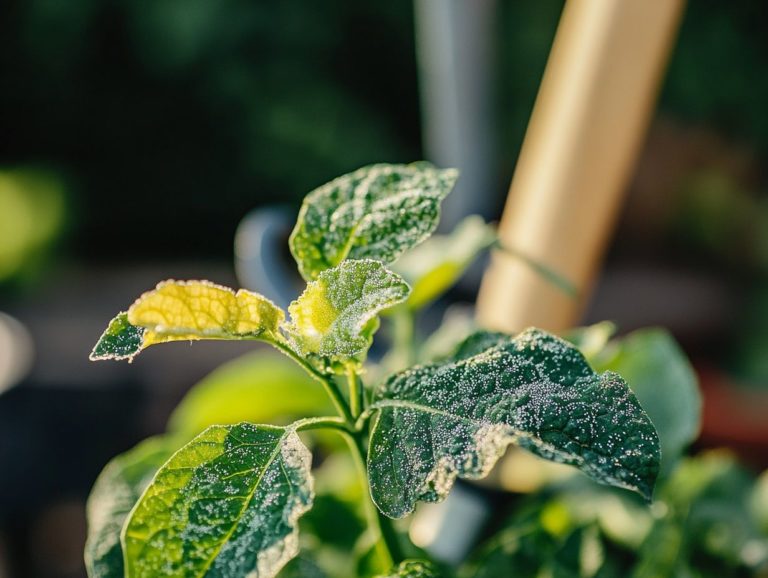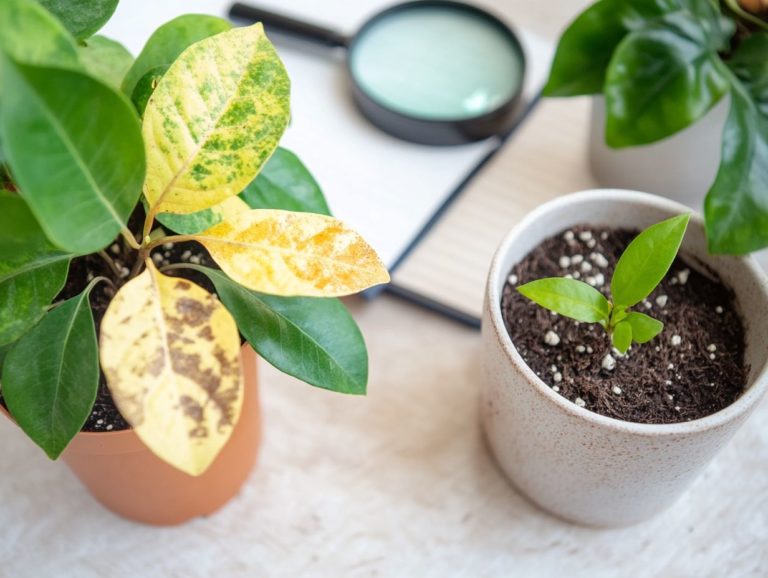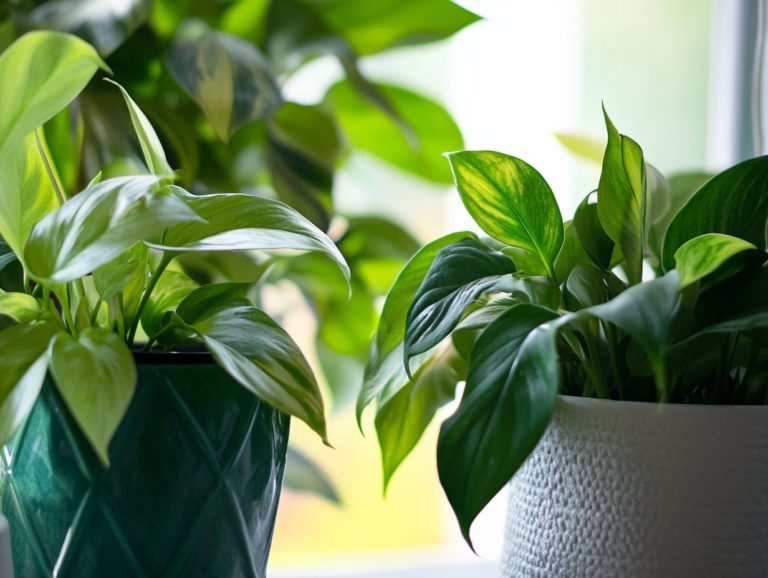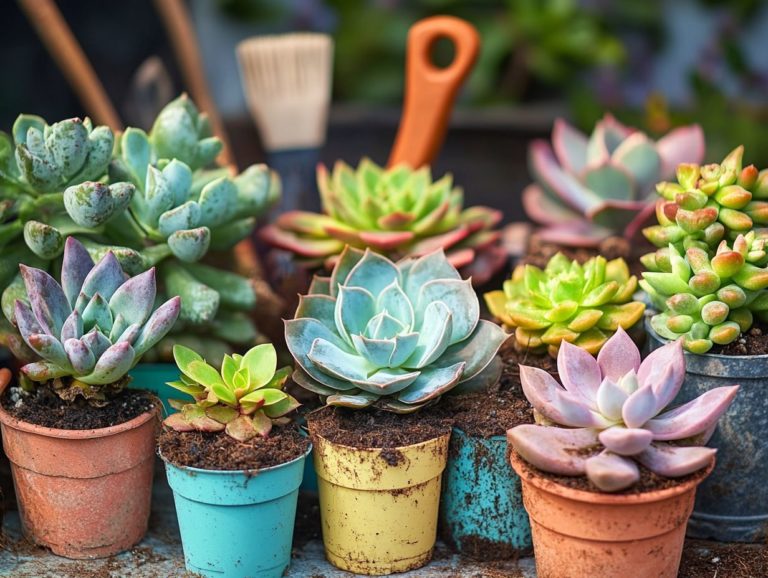Recognizing Signs of Plant Overexposure
Plants, much like any living organism, can experience the downside of abundance. Overexposure whether it s an excess of sunlight, water, or nutrients can lead to a host of issues that impact their overall health and growth.
This article delves into the signs of plant overexposure, highlighting the physical and behavioral indicators, as well as the common environmental and human factors that contribute to this predicament. You will also find practical preventive measures and treatment options designed to keep your greenery flourishing. Immerse yourself in this knowledge to ensure your plants receive the perfect balance of care they deserve!
Contents
Key Takeaways:
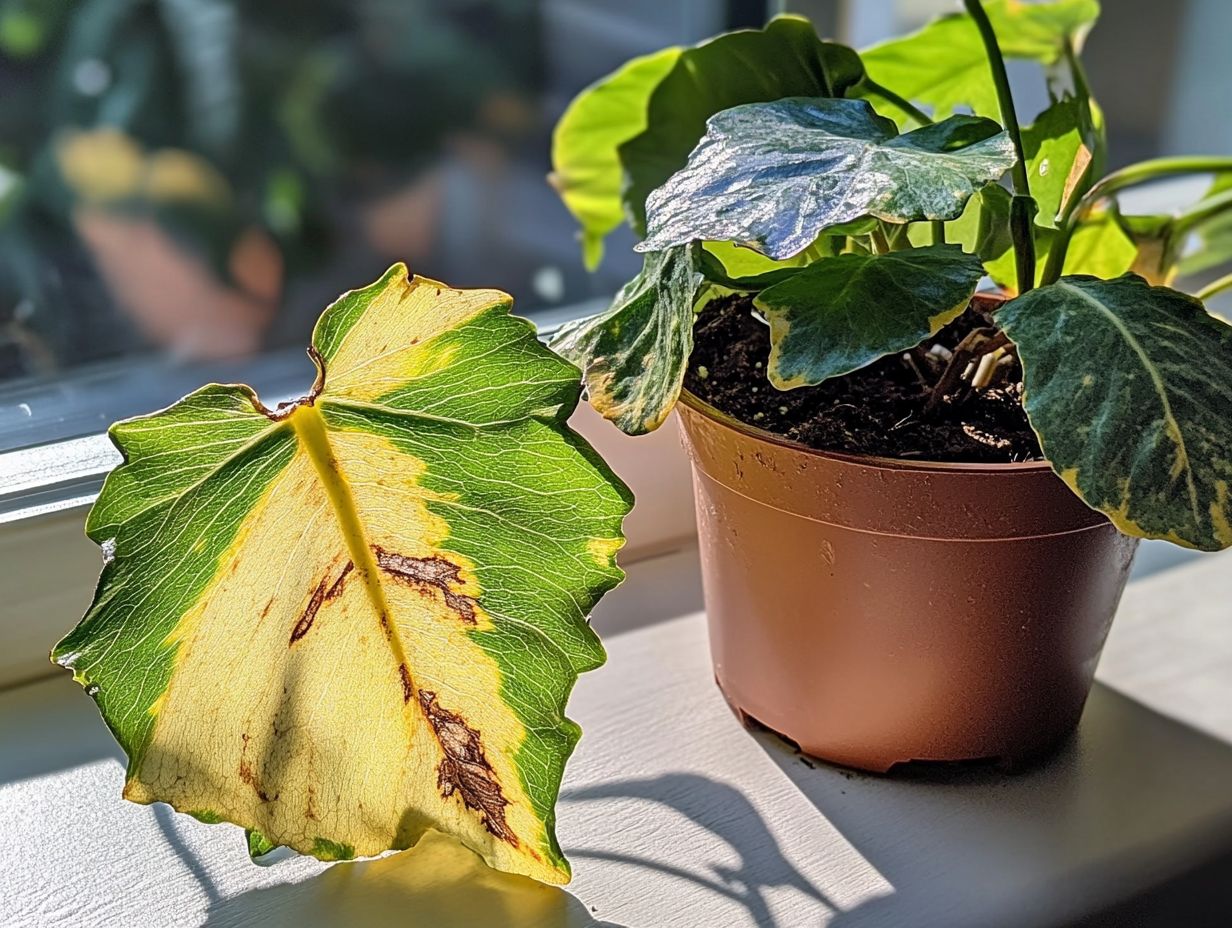
- Monitor your plants closely for signs of overexposure, including wilting and discoloration.
- Identify environmental factors, like too much sunlight, that may harm your plants.
- Implement proper care techniques to prevent overexposure and ensure vibrant growth.
Understanding Overexposure in Plants and Their Care
Keeping your plants healthy and vibrant starts with understanding overexposure! Excess water in the soil can cause a multitude of issues, such as root rot, yellowing leaves, wilting foliage, and even the unwelcome appearance of fungus gnats in both indoor and outdoor plants.
Careful management of your watering techniques, drainage holes, and soil conditions is vital to prevent these overwatering symptoms. To help identify issues early, be aware of the top signs of indoor plant distress. By doing so, you create an environment where both your indoor and outdoor plants can truly flourish, resulting in a vibrant and thriving garden.
What is Plant Overexposure?
Overexposure in plants, primarily caused by overwatering, happens when soil retains excessive moisture, creating conditions ripe for trouble think root rot, plant stress, and unhealthy roots.
When roots find themselves in waterlogged soil, they re deprived of oxygen, that vital element essential for respiration. This lack of aeration throws a wrench in nutrient absorption, leaving roots unable to efficiently take up the critical elements they need for growth.
Simultaneously, photosynthesis takes a hit; those waterlogged conditions can lead to yellowing leaves and wilting, both telltale signs of distress. Nutrient imbalances may surface, appearing as stunted growth or leaf drop.
As your plants grapple with these stressors, they become prime targets for pests and diseases, further complicating the challenges posed by overexposure.
Signs of Overexposure in Plants
Recognizing the signs of overexposure in your plants, such as yellowing leaves and wilting foliage, is essential for timely intervention. Each of these indicators points to excessive watering or inadequate drainage, signaling that your plants need immediate attention.
Physical Signs

Physical signs of overexposure in your plants can be quite telling; you might notice yellowing, mushy, or even brown leaves. These often stem from prolonged exposure to excessive moisture in the soil, resulting from poor drainage.
Beyond these symptoms, watch for other indicators like stunted growth and leaf drop. These can frequently affect various types of plants, particularly cacti and succulents. For example, if your cactus develops soft, water-soaked patches on its pads, that’s a clear signal that moisture levels are dangerously high. To learn more about this issue, check the signs of overwatering in houseplants.
Similarly, a succulent might surprise you with translucent leaves that feel squishy to the touch. To tackle these issues effectively, take immediate action by adjusting your watering frequency, enhancing pot drainage, or relocating the plant to a more suitable environment, all aimed at ensuring robust growth and plant health.
Behavioral Signs
You ll notice behavioral signs of overexposure in your plants, such as wilting leaves and general stress. These symptoms indicate that your green friends are struggling to adapt to their environment.
Symptoms can vary depending on whether your plants are indoors or outdoors. For instance, indoor plants often display yellowing leaves, a sign that they are catching too much light or heat. To help identify these issues, consider recognizing stress signs in indoor plants. In contrast, outdoor plants might develop sunburnt patches on their leaves, making them look like they’ve spent too long at the beach.
Look at succulents. They can develop noticeable scarring when they get too much sunlight, signaling that it’s time for a shade intervention. Understanding these behavioral responses is essential for effective plant care. Additionally, recognizing symptoms of plant dehydration is crucial, as ignoring the signs of overexposure can lead to irreversible damage, jeopardizing the overall health of your plants.
Common Causes of Plant Overexposure
Common causes of plant overexposure stem from a combination of environmental and human factors. Issues like improper watering techniques, insufficient drainage holes, and unsuitable soil conditions can adversely affect moisture levels, ultimately jeopardizing your plants’ health.
Environmental Factors
Environmental factors contributing to overwatering include insufficient light exposure and seasonal fluctuations that can impact moisture levels in the soil. These varying conditions can stress your plants.
For example, during the longer days of summer sunlight, your plants may require more frequent watering due to increased evaporation rates. In contrast, during the cooler, shorter days of fall or winter, their thirst can decrease significantly.
This discrepancy highlights the importance of monitoring your plants’ conditions and adjusting your irrigation practices accordingly. By maintaining a balance between light, moisture, and seasonal changes, you can ensure optimal health for your plants.
Human Factors
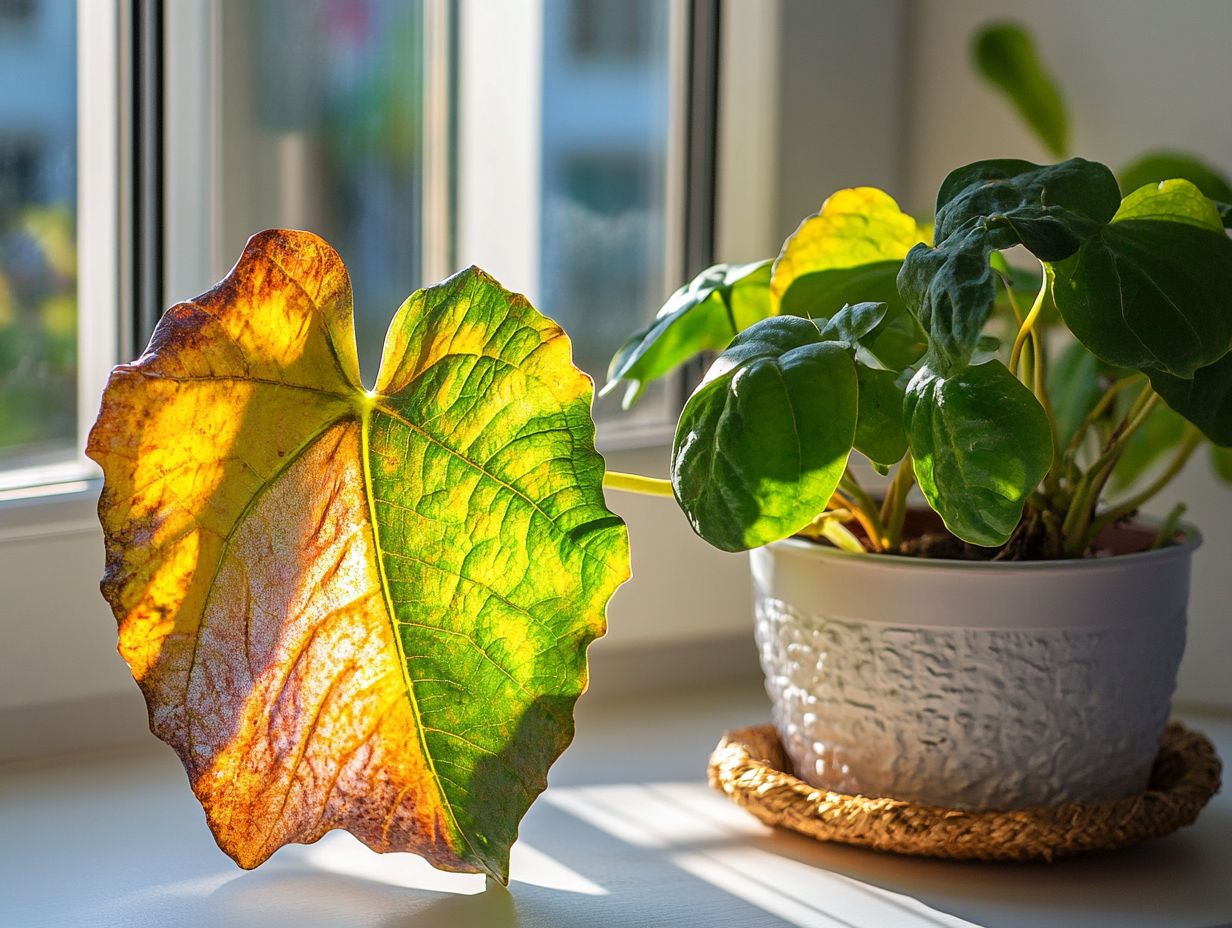
Improper watering techniques and a poorly defined watering schedule can lead you down the path of overwatering, resulting in unnecessary plant stress.
Neglecting the unique needs of different plant species often worsens the situation. It s easy to assume that a one-size-fits-all watering frequency works for every plant. For example, while succulents and cacti thrive in drier conditions, ferns prefer a more humid environment. Understanding these distinctions is essential for your gardening success.
Never underestimate the importance of proper drainage. Stagnant water can invite root rot and fungal diseases into your garden. To ensure vibrant growth, establish a personalized watering schedule tailored to each plant s type, season, and soil moisture levels. Consider using a moisture meter, a device that measures the moisture content in the soil, to accurately gauge hydration levels and keep your plants thriving.
Preventing and Treating Plant Overexposure
Preventing and treating plant overexposure requires a thoughtful approach that blends effective gardening techniques. Start monitoring moisture levels today to keep your plants thriving!
Adopt robust preventive measures alongside appropriate treatment options when necessary. This comprehensive strategy will help you nurture your plants to their fullest potential.
Preventive Measures
Implement preventive measures against overwatering to maintain a healthy garden environment. Ensure that your pots have proper drainage holes and that you re using suitable potting soil, or the soil used to repot plants.
Choosing the right type of pot is crucial. For instance, terra cotta pots are more porous, allowing moisture to evaporate faster than their plastic counterparts. Understanding soil types is equally important; well-draining soils, particularly those with perlite or sand, promote air circulation around the roots, encouraging healthy growth.
Monitor your watering frequency based on factors like humidity and temperature. Keep an eye on your plants for any signs of distress. By adopting a balanced approach to watering and considering the unique needs of your plants, you can cultivate a flourishing garden.
Treatment Options
Treatment options for overwatering issues primarily focus on tackling root rot and revitalizing overall plant health through effective recovery strategies.
Start with a thorough evaluation of your plant’s environment and care routine.
Consider repotting the affected plant into fresh, well-draining soil. This immediate remedy enhances air circulation and reduces moisture retention.
Adjusting your watering frequency is crucial. Ensure the soil has the opportunity to dry out between waterings, giving the roots a chance to recover.
Improving soil conditions with perlite or sand significantly enhances drainage. To restore healthy roots, trim away any damaged sections to encourage new growth.
Boosting resilience may also involve using organic fertilizers to replenish lost nutrients. By adopting these measures, you can help your plants thrive once again!
Frequently Asked Questions
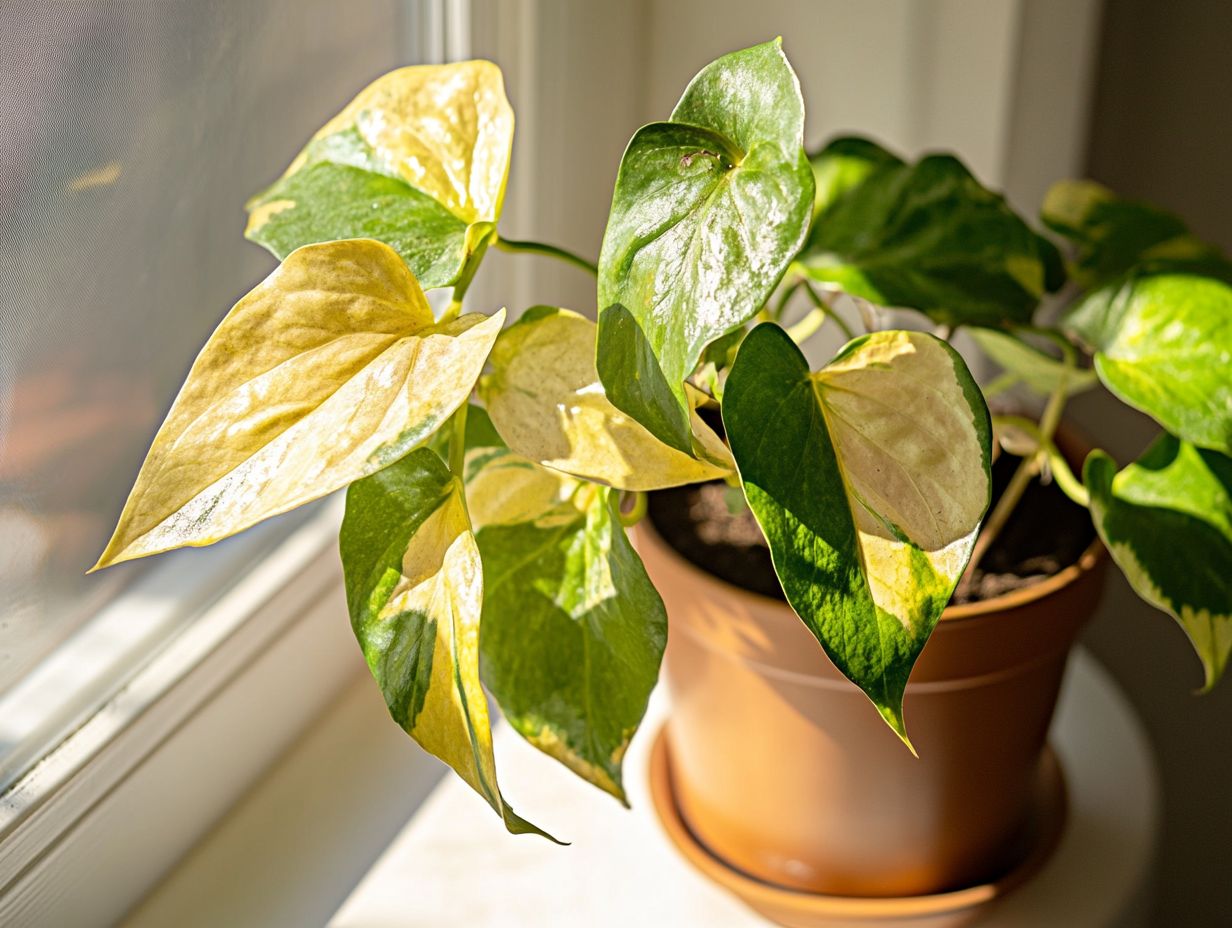
What are the signs of plant overexposure?
Signs of plant overexposure may include yellow or brown leaves, stunted growth, wilting, and browning or drying of the tips of the plant’s leaves.
Why do plants become overexposed?
Plants can become overexposed to sunlight, heat, or certain chemicals if they are placed in an environment that is not suitable for their specific needs.
What are some common causes of plant overexposure?
Common causes of plant overexposure include placing plants in direct sunlight for extended periods, using excessive amounts of fertilizers or pesticides, and not providing enough water or nutrients.
How can I prevent my plants from becoming overexposed?
To prevent plant overexposure, it is important to research the specific needs of each plant. Provide them with the proper amount of sunlight, water, and nutrients.
Also, avoid using excessive amounts of chemicals and provide shade during the hottest parts of the day.
What should I do if I notice signs of plant overexposure?
If you notice signs of plant overexposure, move the plant to a more suitable environment and closely monitor its progress.
You may also need to adjust its care routine and provide necessary treatments, such as trimming dead or damaged leaves.
Can plant overexposure be reversed?
In some cases, plant overexposure can be reversed by providing the plant with proper care and treatment.
However, if the overexposure has caused significant damage, it may be irreversible, and the plant may not survive.
Take care of your plants and check out additional resources for more tips!


